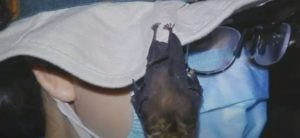- Have any questions? Contact us!
- info@dr-rath-foundation.org

World Health Organization More Doubtful About Vaccines Ending Pandemic
September 17, 2021
New Research: Alzheimer’s Patients’ Memory Test Scores Remain Stable When Taking Omega-3
September 23, 2021COVID-19 Lab Leak: The Net Tightens Around Fauci And Daszak

Over 900 pages of materials describing U.S. taxpayer-funded coronavirus research carried out in China were recently released following a freedom of information lawsuit by The Intercept. The documents provide disturbing details of viral and bat research conducted at the controversial Wuhan Institute of Virology. They also contain previously unpublished grant proposals funded by the U.S. National Institute of Allergy and Infectious Diseases (NIAID), a government body headed by the notorious Anthony Fauci, as well as project updates relating to research organized by the EcoHealth Alliance, a New York-based outfit led by the equally controversial Peter Daszak. A British zoologist with close links to the Wuhan Institute, Daszak’s name appears hundreds of times in the documents.
The work described in the documents includes the screening of thousands of bat samples for novel coronaviruses. A $3.1 million grant provided by NIAID to the EcoHealth Alliance is shown to have included $599,000 that the Wuhan Institute used in part to identify and alter bat coronaviruses likely to infect humans. Known as ‘gain-of-function’ experiments, the altering of dangerous animal viruses to enhance their ability to infect human beings has become worryingly commonplace in recent years. Worldwide there is increasing concern over the dangers posed by such experiments.
The documents also reveal that work on humanized mice was being carried out in Wuhan, with the goal of testing which coronaviruses could infect human beings. Conducted at the Wuhan University Center for Animal Experiment, the documents show that these experiments were not carried out under the highest possible biosafety conditions. The documents even acknowledge some of the dangers of this type of work, stating that the associated fieldwork “involves the highest risk of exposure” to coronaviruses and the potential for fecal dust from bats to be inhaled.
Denials all round
Illustrating the lack of appropriate precautions being taken by Wuhan researchers, film obtained by Sky News Australia shows live bats contained in a lab cage. A researcher holding a bat and feeding it with a worm was also filmed. Notably, Peter Daszak had previously denied on Twitter that the Wuhan lab had kept either live or dead bats. Providing further proof that precautions were dangerously lax, video footage from a field trip even shows a live bat hanging from a researcher’s hat, right next to their face. But Daszak is hardly alone in denying the existence of such evidence.
Interviewed in the U.S. Congress on 11 May 2021, Anthony Fauci similarly denied – despite growing evidence to the contrary – that the National Institutes of Health (NIH) and NIAID had ever funded gain-of-function research at the Wuhan Institute. In a subsequent interview on 20 July 2021, Fauci subtly shifted his position and claimed that taking an animal virus and increasing its transmissibility to humans doesn’t constitute gain-of-function research. Many observers have since accused Fauci of having lied to Congress – and having thus committed a criminal offence.
Meantime, a recent investigation by the British Daily Telegraph newspaper has revealed that 26 of the 27 scientists who published a joint letter in The Lancet medical journal dismissing the possibility that the coronavirus could have come from a lab in Wuhan were linked either to Chinese researchers, their colleagues, or funders. Published early in the pandemic, in March 2020, this letter became highly influential in essentially shutting down debate over whether the virus was manmade and had leaked from a lab. It later emerged that the letter had been quietly organized and drafted by Peter Daszak himself. Hardly surprising, therefore, that calls are growing for Daszak to be subpoenaed to appear before the U.S. Congress House and Senate Foreign Relation Committees.
A magnet for biopharmaceutical companies
No doubt attracted by the proliferation of gain-of-function research, in recent years Wuhan has become a magnet for biopharmaceutical companies. At the outset of the pandemic in February 2020, a total of 42 pharmaceutical contract manufacturing facilities were located in Hubei Province, of which Wuhan is the capital.
An earlier Chinese report from 2013 states that 8 of the world’s top 500 biopharmaceutical companies were already by then located in Wuhan. The companies cited included Sanofi Pasteur, which the report describes as ‘a world-known French vaccine company’, Bayer, and, most notably, Pfizer. A spokesperson for Pfizer quoted in the report specifically states that the research conducted in the Wuhan area was one of the main things that attracted the company to situate itself there. Through the billions of dollars it has made from sales of its mRNA COVID-19 vaccine, Pfizer has since gone on to become the biggest biopharmaceutical beneficiary of the pandemic.
For the time being, whether any Hubei Province pharmaceutical companies were involved in gain-of-function research in Wuhan prior to the pandemic remains an open question. But while there is much that we still don’t know, it is already clear that the lab leak theory can no longer be ruled out. To the contrary, in fact, as The Intercept documents testify, the weight of circumstantial evidence supporting such a possible origin is now substantial. With accusatory fingers increasingly being pointed in their direction, Anthony Fauci and Peter Daszak are unlikely to be resting easy in their beds at night.





